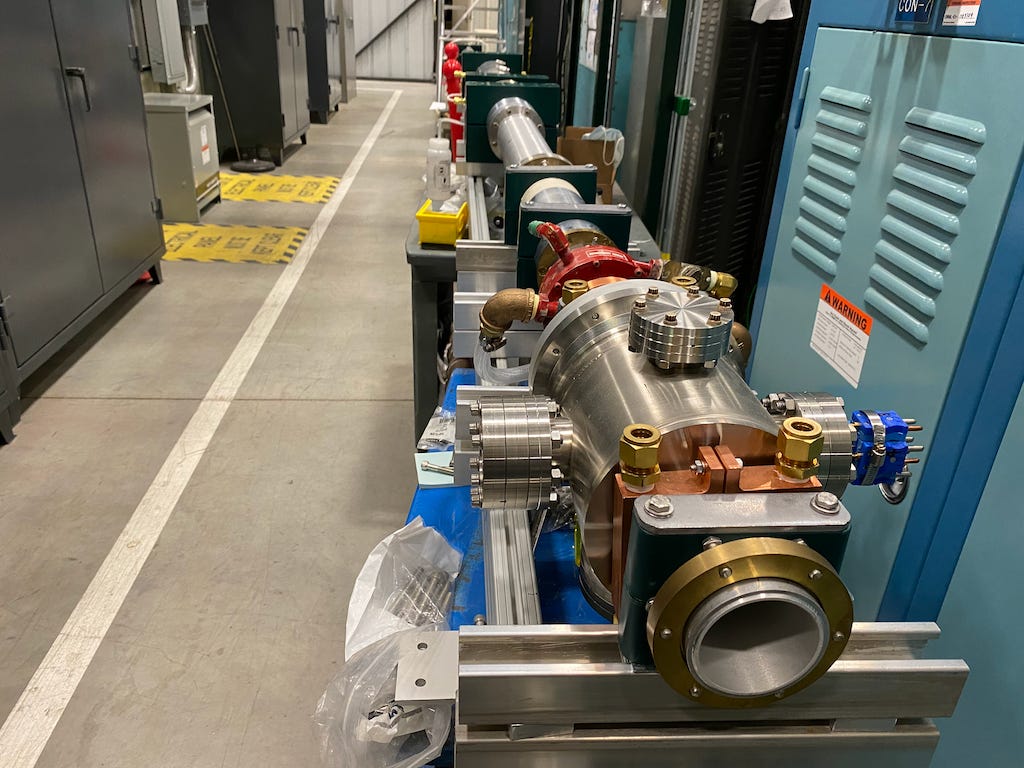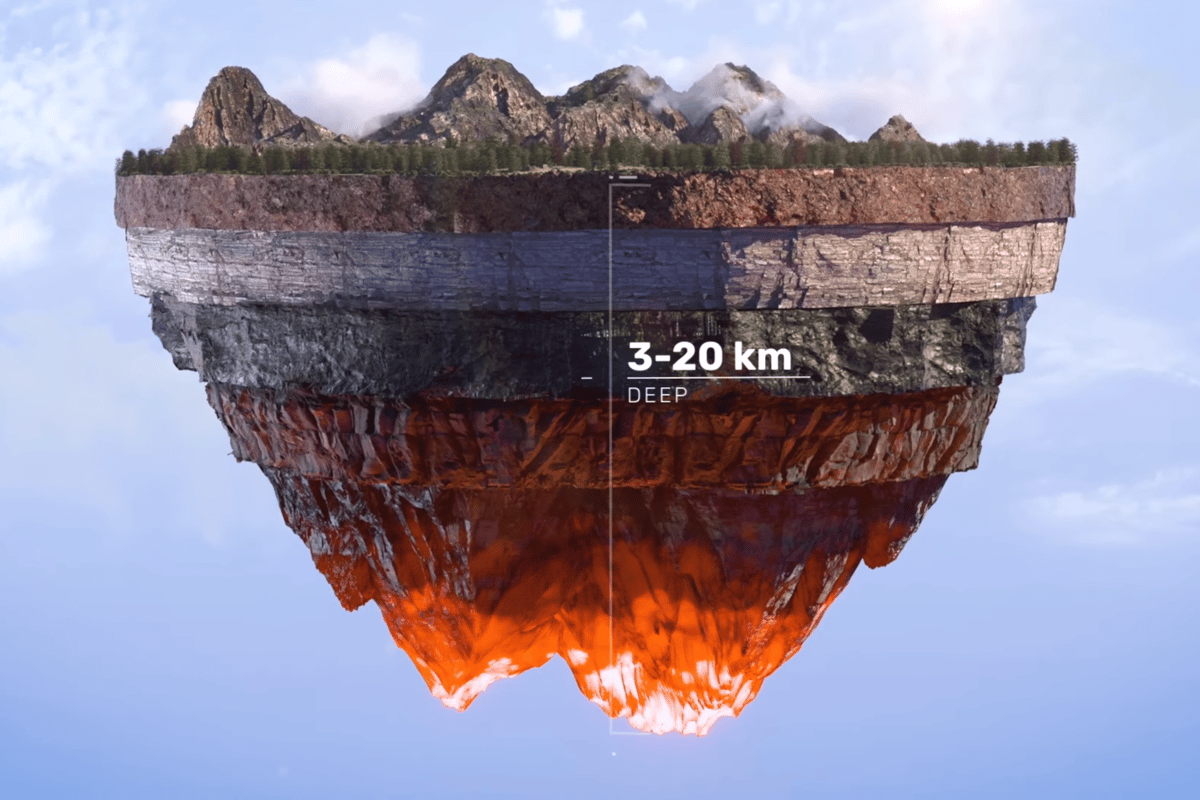The company using Fusion tech to pull power out of the ground
Cross pollination of technologies across the next-gen energy family makes Quaise possible.
The transition to clean energy is one of the most pressing challenges of our time. We have discussed different energy concepts several times in this newsletter, but today I want to focus on a company that is taking a unique approach to this challenge: Quaise Energy. Geothermal energy has been something of the spinster aunt of the next-gen energy family. It's always been there, but it's never been the belle of the ball. This is due to the previously limited locations where geothermal energy could be harnessed(hot springs, geysers, etc.). Quaise is changing this by unlocking the potential of deep geothermal energy to provide a truly global, baseload clean energy source. Even cooler, they are doing this by repurposing existing fossil fuel infrastructure and combining it with tech from fusion research. This grab-bag of technologies and verticals is exactly what makes Quaise so exciting, so let's get into it.
Tech & Deployment
What sets Quaise apart is the nuts-and-bolts drilling technology—not the method of power generation—which uses millimeter waves to vaporize rock and reach unprecedented depths. This technology, known as gyrotron-powered drilling, was originally developed for fusion research at MIT. Quaise has adapted this technology for geothermal drilling, enabling them to reach depths of up to 20 kilometers, where temperatures can exceed 500°C. They start by drilling a pilot hole of about 3km with standard methods(adapted from gas and oil drilling), then switch to gyrotron-powered drilling to reach as far as 20km. This is incredibly deep and hasn't been accessible in any significant way to this point due to just how hard rock is at these depths.
At these depths, the heat is so intense that it can be used to generate steam and drive turbines, just like in a traditional thermal power plant. Unlike fossil fuels though, geothermal energy is renewable and emits no greenhouse gases. Quaise's technology could unlock a virtually limitless supply of clean energy, available anywhere in the world. Right now the question with geothermal isn't what to do with the heat(we know how to work with steam!), but simply getting there. Simply put, and not to repeat myself, it is HARD to drill through HARD rock.
But Quaise isn't just innovating on the technology front. They are also taking a strategic approach to deployment, focusing on repowering existing fossil fuel infrastructure with clean geothermal energy. By drilling onsite at existing thermal power plants and industrial centers, Quaise can tap into the established infrastructure and workforce of the fossil fuel industry. This not only accelerates the transition to clean energy but also ensures a just transition for workers in the fossil fuel sector. In addition, the existing infrastructure(steam turbines, grid hookups, etc.) can be slotted in directly where coal once was. This dramatically cuts the cost of deployment and makes the transition to clean energy more economically viable, and more rapid.
Cross-Pollination of Technologies
One of the most exciting aspects of Quaise's technology is how it leverages innovations from other fields, particularly fusion research. The gyrotron, which is at the heart of Quaise's drilling system, was originally developed for heating plasma in fusion reactors. This is the kind of technology crossflow that has become more common in the last few years and will hopefully keep accelerating. Advances in Field A can be applied to an existing platform in Field B, opening up opportunities that wouldn't have existed previously. Building on this, the teams working on it in Field B can make improvements that wash back into Field A, and so on.
This cross-pollination of technologies can be seen especially clearly in the energy sector. For example, advances in battery technology from the electric vehicle industry are being applied to grid-scale energy storage, enabling the integration of more renewable energy sources like solar and wind. We're seeing similar dynamics play out in other areas of clean energy. For example, advances in materials science from the semiconductor industry are being applied to solar cells, leading to higher efficiencies and lower costs. This is especially clear in the case of Quaise which is a near-direct drop-in of Fusion tech into existing drilling.
This kind of interdisciplinary collaboration is essential for tackling the complex challenges of the energy transition. By breaking down silos and fostering cross-pollination of ideas, we can unlock new possibilities and accelerate progress towards a clean energy future. Tribalism for your favorite kind of energy isn't the solution here, whatever fixes climate change--a variety of technologies for a wide energy mix, more likely--is the solution.
A Vision for a Clean Energy Future
What is critically exciting here is the geographic flexibility of Quaise's technology. By tapping into the Earth's heat at unprecedented depths, Quaise can provide a truly global source of clean energy. More than this, building in transmission becomes less necessary when you can build the power plant right where the power is needed. In addition, existing transmission infrastructure hooked up to Natural Gas or Coal plants can be utilized in their original form for geothermal. This is a huge advantage, as transmission is one of the most expensive parts of building a new power plant, and grid hookups are a gigantic bottleneck for solar and wind projects(should I write about this? Let me know in the comments)
Moreover, Quaise's technology adds an important element of diversity to the clean energy mix. While solar and wind are critical components of a sustainable future, they are intermittent and dependent on weather conditions. Geothermal energy, on the other hand, provides a constant, reliable source of power that can help to balance the grid and ensure a stable energy supply. This, along with Nuclear, Hydro, and other baseload sources, can provide a stable backbone for the grid, with solar and wind acting as the cherry on top.
More energy is directly correlated with greater human prosperity. Period. Quaise is working to deliver on this in a big way, and I will be cheering them on from the cheap seats. The transition to a sustainable energy system won't be easy, but with companies like Quaise bringing geothermal, the former spinster of the energy family, to the forefront, I believe we are only beginning to accelerate. See you next week folks.



